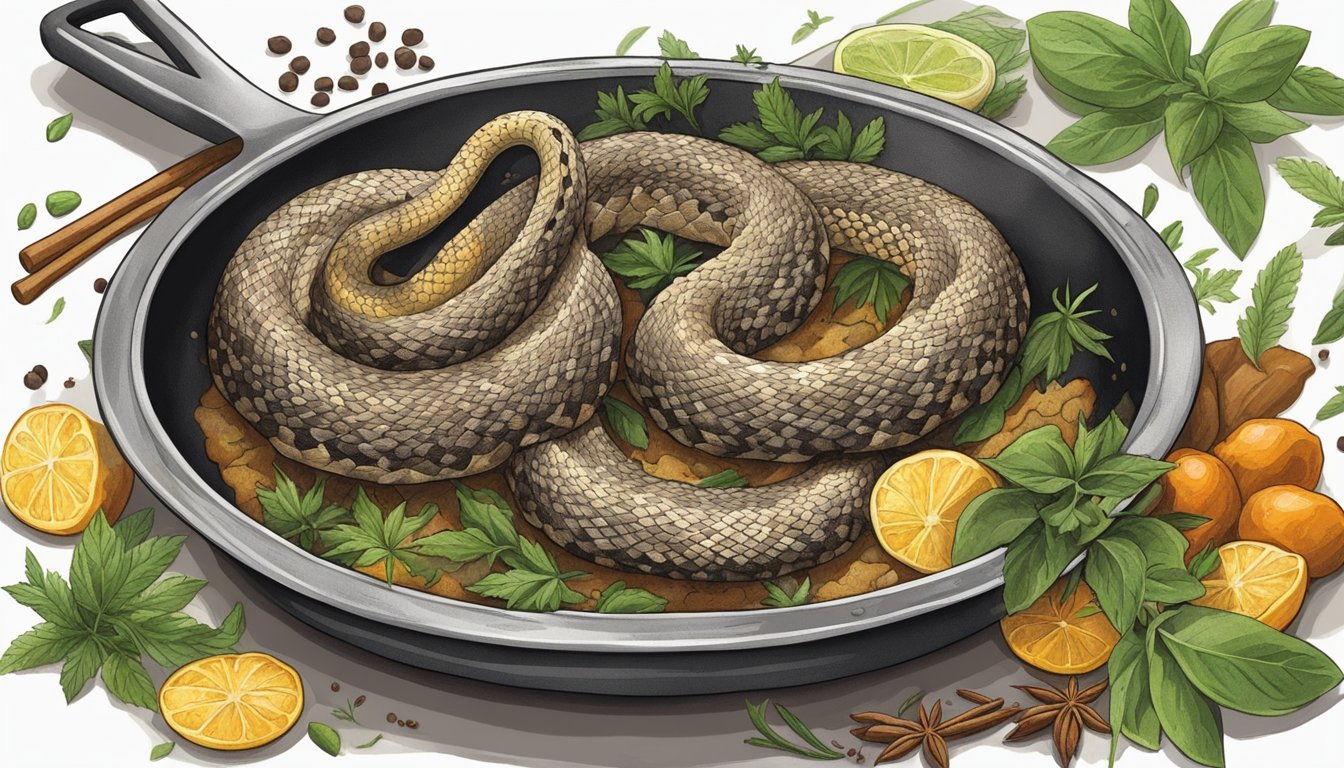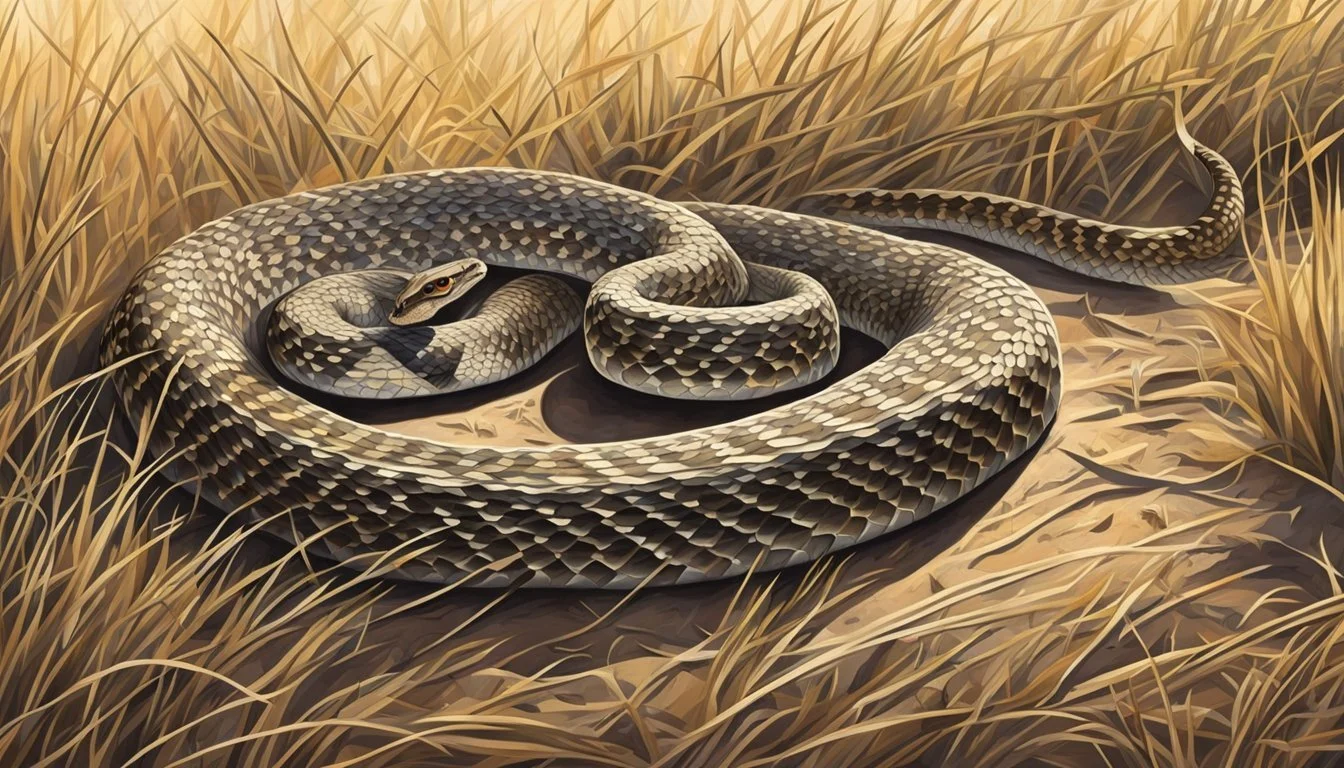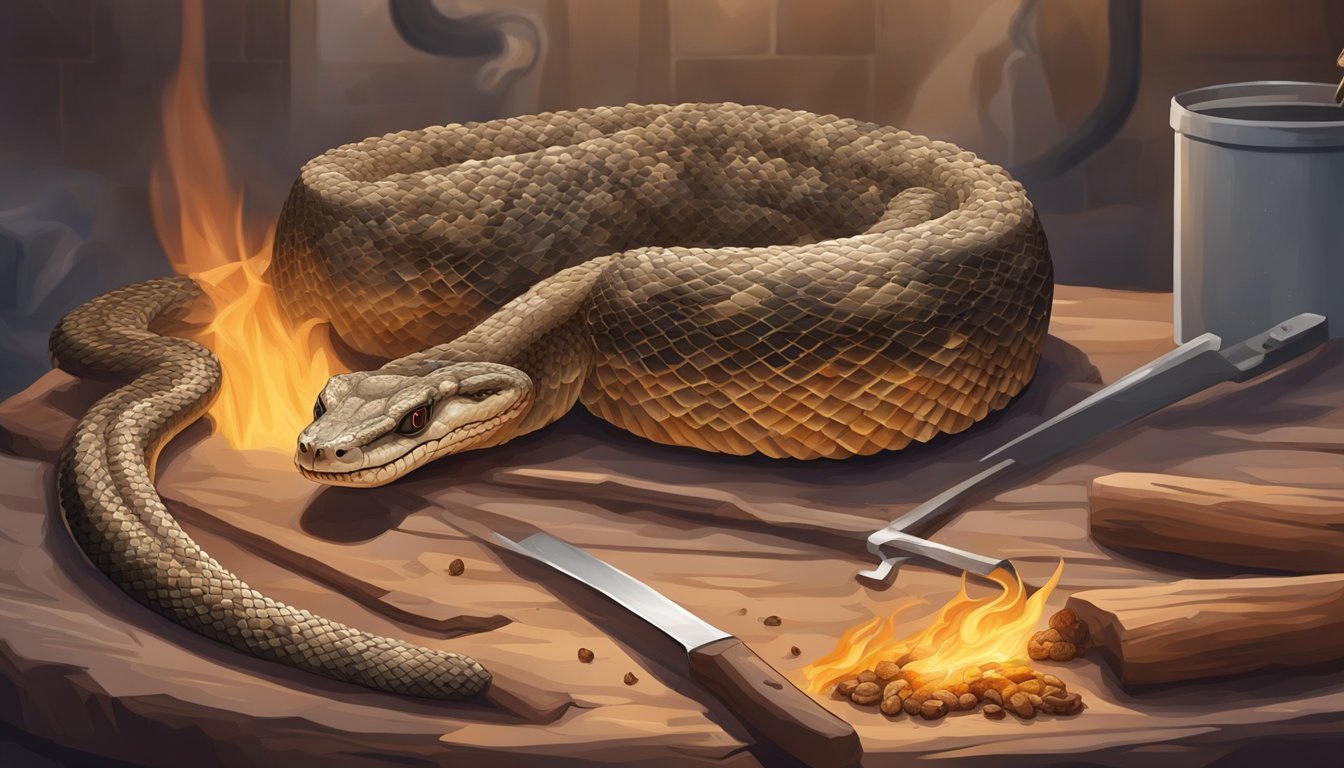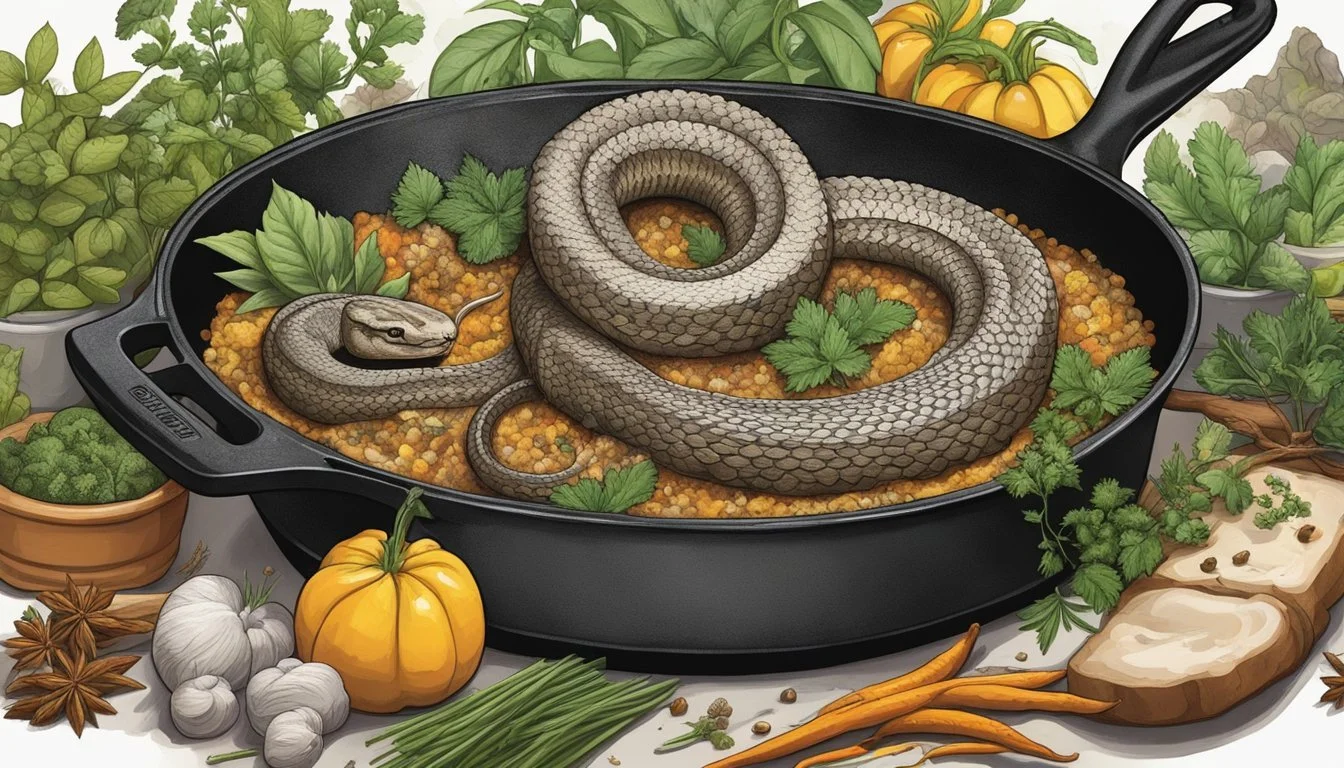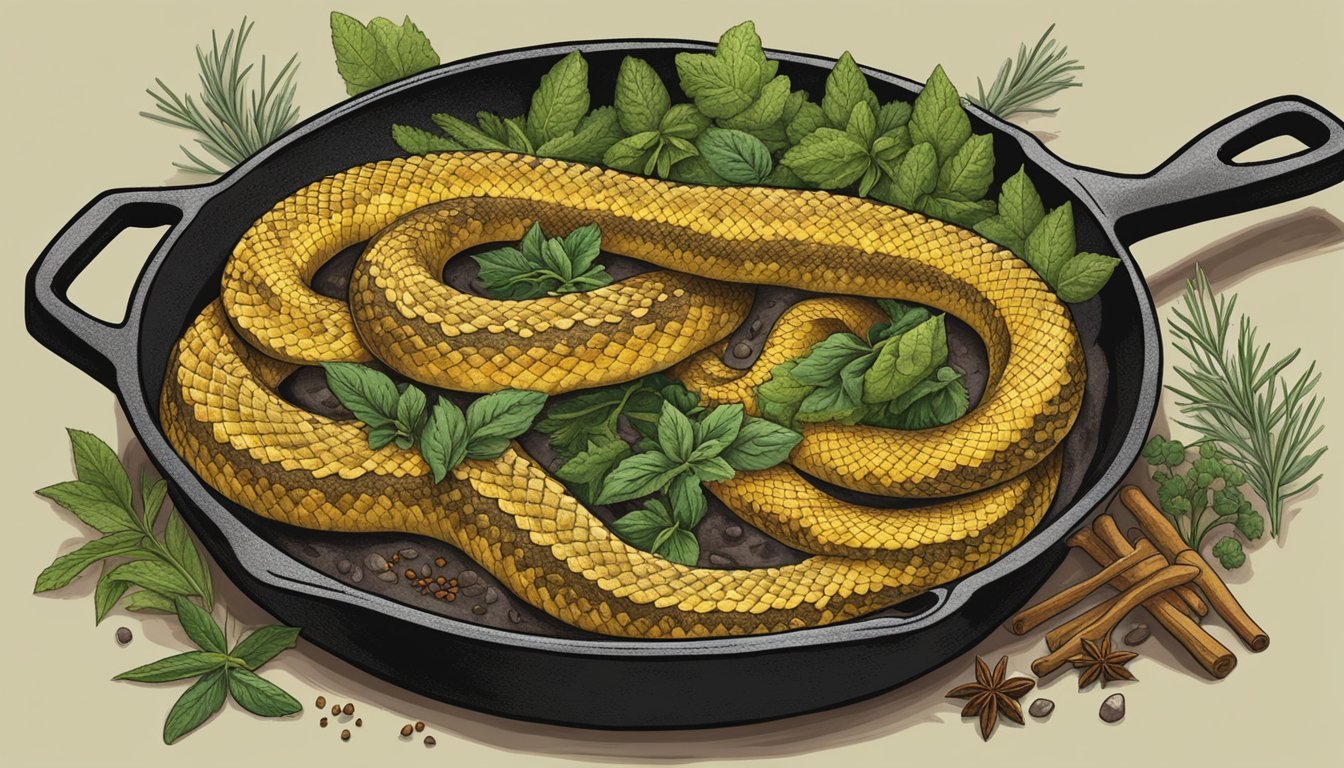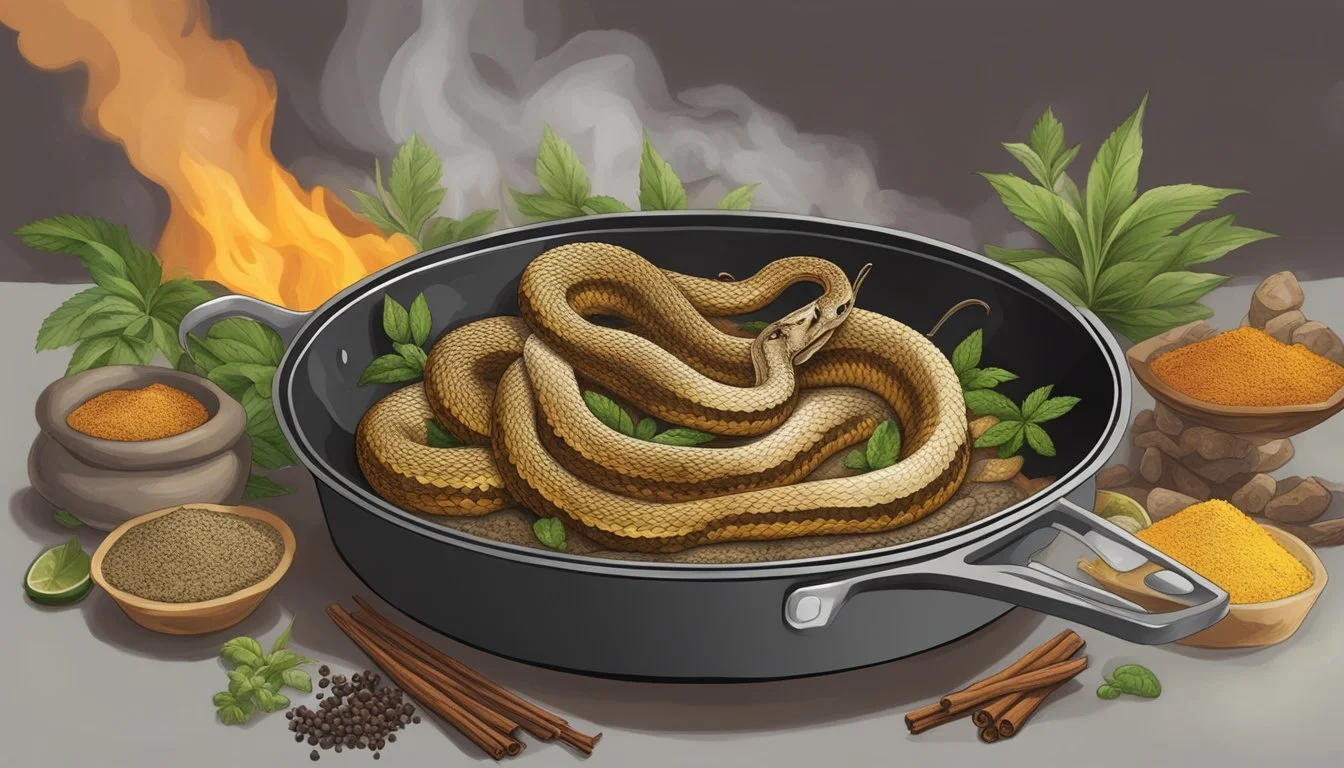Fried Rattlesnake Unveiling America's Unique Culinary Experience
Fried rattlesnake is one of the most unique dishes on the American culinary landscape, offering a surprising blend of tradition and exotic taste. This unusual delicacy is more than a novel menu item; it embodies a rich history and a distinct flavor profile that adventurous diners seek out. Throughout the United States, particularly in Southwestern regions where rattlesnakes are more commonly found, this dish has carved out a niche among local specialties, becoming a symbol of cultural heritage and culinary daring.
The preparation of fried rattlesnake is as meticulous as it is intriguing. The meat, known for its high protein content and relatively low levels of carbohydrates and calories, is prepared by first cleaning and segmenting the snake. Cooks then coat the pieces in a seasoned batter before frying them until they reach a golden brown crispness. The resulting dish offers a tender texture and a taste that is frequently compared to that of other white meats, with the added appeal of its unique origin.
Although some may find the concept of eating rattlesnake to be daunting, its consumption in America is a practice rooted in both necessity and curiosity. With rattlesnake meat being a notable resource in the wild, its integration into the American diet showcases the resourcefulness of past and current generations. As palates evolve and people become more open to diverse food experiences, fried rattlesnake stands out as a testament to America's bold and eclectic gastronomic spirit.
Historical Context
Rattlesnake has had a unique place in American culinary history, often linked to the survival skills of early settlers and the practices of Native American tribes. Understanding this dish's origins requires exploring its consumption by these communities.
Early Settlers and Native Tribes
The early settlers in America encountered a variety of wildlife, including rattlesnakes. Observations and records from this period indicate that settlers learned about rattlesnake consumption from Native American tribes. For instance, the Apache and other tribes considered rattlesnake meat a part of their diet. The settlers, seeing the nutritional value in this practice, occasionally adopted it, especially when other food sources were scarce.
Rattlesnake as a Survival Food
In the harsh frontiers of America, survival occasionally demanded unconventional food sources. Indiana and other frontier areas where early American settlers found themselves often had rattlesnakes. These settlers hunted and prepared rattlesnake meat as a crucial survival food. The act of consuming rattlesnakes transformed from a necessity into a cultural curiosity over time, as referenced by an 1905 newspaper from the Newark Advocate detailing an elaborate rattlesnake menu. The consumption of rattlesnake is tied not only to America's culinary history but also its narrative of resourcefulness and adaptation.
Rattlesnake Biology
Understanding the biology of rattlesnakes is crucial when considering any interactions with this intriguing group of venomous snakes. These components of their biology are fundamental not only to their survival in the wild but also to our understanding of their role in various ecosystems.
Anatomy and Appearance
Rattlesnakes possess a distinctive rattle at the end of their tail, comprised of interlocking keratin segments. This rattle serves as a warning device, creating a characteristic sound when vibrated. They have a stout body with a triangular head and hinged fangs which inject venom into their prey. Their scales are typically patterned, aiding in camouflage within their habitats.
Habitat and Range
Rattlesnakes are found across the Americas, with their range extending from southern Canada to central Argentina. They inhabit diverse environments such as deserts, grasslands, forests, and wetlands. Their adaptability to different habitats is notable, although each species has specific range requirements for survival.
Diet and Predation
They primarily feed on small rodents, birds, and other small animals, using their heat-sensitive pits for detecting warm-blooded prey. A rattlesnake's diet serves a critical role in controlling rodent populations, aiding in the balance of local ecosystems. Predation on rattlesnakes is relatively low due to their venomous defense, but they can fall prey to birds of prey, wild pigs, and other larger snakes.
Conservation Status
Many rattlesnake species are classified as endangered or threatened due to habitat loss, poaching, and extermination campaigns. This classification intends to protect these species from declining further, as they are crucial contributors to many ecosystems they inhabit. Ongoing conservation efforts aim to mitigate the dangers faced by rattlesnakes and ensure their continued existence in the wild.
Hunting and Preparation
Preparing rattlesnake meat is a multi-step process that begins with responsible hunting and ends with proper preservation techniques. The following subsections delineate crucial aspects of this journey from the wild to the table.
Legal and Ethical Considerations
Before hunting rattlesnakes, individuals must understand applicable laws and regulations to ensure conservation of these venomous snakes. Each state may have specific guidelines regarding hunting seasons, licensing requirements, and limits on the number of snakes that can be taken. Ethically, hunters should aim to cause minimal suffering to the animal and adhere to wildlife conservation practices that support rattlesnake populations.
Hunting Techniques
Hunters employ a variety of techniques to capture rattlesnakes, often using long-handled tongs or hooks to maintain a safe distance from the snake's venomous strike. Capturing them requires a keen eye, as rattlesnakes can blend into their environments. After capture, it’s vital that they are contained safely and humanely during transport.
Skinning and Cleaning
Skinned rattlesnake meat is considered a delicacy. Skin removal involves making a longitudinal incision and peeling the skin away from the flesh. The hunter must take care not to puncture the venom sacs during this process. Once skinned, the meat should be thoroughly cleaned to ensure all traces of venom and potential pathogens are removed.
Tools for Skinning:
Scissors or sharp knife
Long-handled tongs
Meat Preservation
After cleaning, rattlesnake meat requires proper preservation to maintain freshness. It can be refrigerated for short-term storage or frozen for extended periods. Hunters commonly use vacuum sealing to protect the quality and flavor of the meat during freezing.
Preservation Method: Refrigeration
Duration: 1-2 days
Preservation Method: Freezing
Duration: Several months
Preserving meat promptly is essential to prevent spoilage and to retain the meat's unique taste and texture.
Cooking Rattlesnake
Preparing rattlesnake meat requires specific steps to ensure it's palatable and tender. From marinating and tenderizing to various cooking techniques, this guide will help navigate the process.
Marinating and Tenderizing
Marinating rattlesnake meat is a common practice to enhance both flavor and tenderness. A simple marinade might include olive oil, garlic, herbs, and citrus juice. For additional tenderizing effect, marinades can incorporate ingredients like liquid smoke to impart a smoky flavor.
Cooking Techniques
There are various techniques to cook rattlesnake meat. One can grill, roast, or pan-sear it, much like other meats. The key to success is maintaining a high enough temperature to cook the meat thoroughly while preserving its delicate texture.
Frying the Rattlesnake
To fry rattlesnake, one begins by cutting it into manageable pieces, typically 3 to 4 inches in length. After marinating and tenderizing, the pieces are coated with a seasoned flour mixture, often including a blend of garlic powder, onion powder, and peppers.
Steps for Frying:
Heat oil in a pan to approximately 375°F.
Dredge rattlesnake pieces in the seasoned flour.
Carefully place in hot oil and fry until golden brown, ensuring each piece is cooked evenly.
Other Cooking Methods
Beyond frying, rattlesnake can be prepared in ways similar to more conventional meats. It can be roasted or grilled as an alternative, often compared to cooking buffalo due to its lean nature. Some recipes might even suggest serving fried rattlesnake with gravy or a dipping sauce to complement its flavor profile.
Flavors and Pairings
When preparing fried rattlesnake, one encounters a nuanced flavor profile reminiscent of chicken, paired thoughtfully with sides and sauces that enhance the culinary experience.
Taste Profile
Fried rattlesnake has a unique taste often likened to that of poultry, particularly chicken. The meat can present a tender and slightly gamey taste that is pleasantly accented with a crispy, seasoned breading. Seasonings such as salt, pepper, and garlic are used to elevate the natural flavors of the meat.
Serving Suggestions
A key consideration for serving fried rattlesnake is ensuring it complements the main dish without overwhelming it. The meat is often cut into smaller pieces before frying and is typically served hot. Bacon wrapped rattlesnake is another popular variation where the fattiness of the bacon adds richness to the lean snake meat.
Suggested Serving Format:
Hot as a main dish
Wrapped in bacon for added flavor
Accompaniments and Side Dishes
Selecting the right accompaniments and side dishes can significantly enhance the dining experience with fried rattlesnake.
Dipping Sauce: A range of sauces from classic gravy to more tangy options like Worcestershire sauce can be paired for added moisture and complexity.
Side Dishes: Traditional sides like fries and mashed potatoes offer a comforting balance to the dish.
Unique Pairings: For those seeking unconventional sides, a Koolickle, a Kool-Aid marinated pickle, adds an unexpected sweet and tart component.
Side Pairing Table:
Side Dish: Fries
Characteristic: Crispness
Side Dish: Mashed Potatoes
Characteristic: Creaminess
Side Dish: Gravy
Characteristic: Richness
Side Dish: Worcestershire Sauce
Characteristic: Tanginess
Side Dish: Koolickle
Characteristic: Sweet and Tart
Cultural Significance
Fried rattlesnake, a dish that might sound unusual to many, holds a distinct place in American culinary tradition, reflecting the regional pride and historical significance of this exotic protein source.
Regional Delicacies
In regions such as the Midwest and Southwest, rattlesnake meat has been a part of the diet for generations, often associated with frontier and survival skills. The states of Illinois, Missouri, Ohio, and Wisconsin are known for their varied local cuisines, but rattlesnake dishes are more commonly found in states like Texas and Arizona where the snakes are endemic.
Midwest: Not commonly associated with rattlesnake consumption.
New York State: Rattlesnake eating is not a part of the mainstream culinary culture.
Illinois: No significant tradition of consuming rattlesnake.
Missouri and Ohio: Rattlesnake dishes are unusual, with few anecdotal reports of consumption, primarily in rural areas.
Rattlesnake Festivals
Rattlesnake festivals can be found in the U.S, especially in states where rattlesnakes are abundant. These festivals celebrate the creature and its role in the local ecosystem, often featuring rattlesnake-based dishes as a highlight.
Oklahoma: Home to prominent rattlesnake festivals, such as the Mangum Rattlesnake Derby.
Texas: Hosts several rattlesnake festivals, including the Rattlesnake Roundup in Sweetwater.
Modern Culinary Scene
The fascination with fried rattlesnake has endured into the modern culinary scene as adventurous chefs and food enthusiasts seek to rediscover and redefine American heritage foods. While not mainstream, fried rattlesnake appears occasionally as a novelty dish in specialized or theme-based restaurants, reflecting both historical traditions and current culinary trends.
Canada and Mexico: Rattlesnake dishes are not commonly found in the mainstream culinary scenes.
Japan: Also not part of the traditional cuisine, though Japan is known for its openness to diverse and exotic foods.
Minnesota State Fair: Known for eclectic food choices, but fried rattlesnake has not featured as a staple item.
Health and Safety
When considering the preparation and consumption of fried rattlesnake, one should be informed about the nutritional value, acknowledge potential risks, and understand the basics of first aid for snakebites.
Nutritional Information
Rattlesnake meat, a source of protein, can be nutritious. Typically, it contains a range of B vitamins, is low in saturated fat, and includes essential minerals such as iron and magnesium.
Nutrients: Protein
Value per 100g of meat: 17.6g
Nutrients: Fat
Value per 100g of meat: 1.4g
Nutrients: Cholesterol
Value per 100g of meat: 55mg
Nutrients: Calories
Value per 100g of meat: 93
Potential Risks
Fried rattlesnake carries certain risks. Firstly, rattlesnakes are venomous, and one must take caution during capture and butchering to avoid snakebites. Secondly, as with all wild game, the meat should be handled and cooked properly to prevent foodborne illnesses.
Handling: Only experienced individuals should handle live rattlesnakes to avoid the risk of envenomation.
Preparation: Rattlesnake meat should be thoroughly cooked to an internal temperature of 160°F (71°C) to eliminate pathogens.
First Aid for Snakebites
In the event of a rattlesnake bite, prompt and proper first aid is critical due to the possibility of death from envenomation. The affected area should not be cut or suctioned, as once was commonly believed. Instead, one should:
Stay Calm: Keep the bitten person as still as possible to prevent venom from spreading.
Immobilization: Immobilize the bitten area and keep it lower than the heart.
Medical Attention: Seek immediate medical assistance or call for emergency services.
While rattling is a signature behavior of rattlesnakes, it is a warning signal and should not be tested by those not trained to handle venomous snakes. Safety is paramount when dealing with rattlesnake meat, from capture to cooking.
Similar Exotic Foods
America's culinary landscape is dotted with creative and unexpected dishes that challenge and excite the palate. The adventurous food lover can find a variety of unusual delicacies across the country, akin to the experience of trying fried rattlesnake.
Comparison with Other Delicacies
Fried Butter: Often found at state fairs, this deep-fried delight takes indulgence to a new level. A cube of butter is coated in a sweet batter and fried until golden, resulting in a warm and oozing treat.
Rocky Mountain Oysters: Not oysters at all, but rather the testicles of bulls, pigs, or sheep that have been peeled, flattened, and deep-fried. They are a celebrated delicacy in some parts of the American West.
Frog Legs: A staple in Southern and French cuisine, frog legs are often battered and fried. Their taste often draws comparison to chicken with a slightly fishier undertone.
Pickle Dog: A unique take on the hot dog, where a pickle spear replaces the sausage. Typically, the pickle is covered with cream cheese and wrapped in a slice of ham.
Ambrosia Salad: A sweet, chilled dish typically combining miniature marshmallows, coconut, pineapple, and mandarin oranges, all mixed into a base of sour cream or yogurt.
Brain Sandwich: Sometimes called a "calf's brains sandwich" or "brain burger," it's made from sliced pan-fried calf brains on a bun, common in regions of the Midwest.
Appar: Less well-known, appar is a traditional dish of several Native American tribes and involves steaming or baking corn dough wrapped in corn husks. It is similar to the Mexican tamale but varies in ingredients and preparation.
These dishes exemplify the diverse and sometimes surprising nature of American cuisine, where the only limit is the human imagination.

